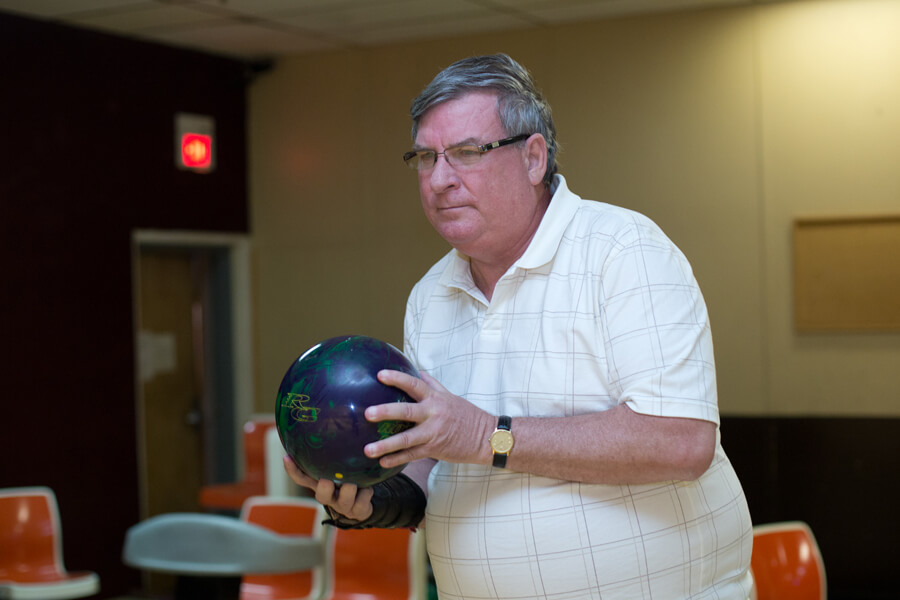“The space was relaxing, like staying at a hotel. And the sleep techs are very professional.”

Obstructive sleep apnea meets its match
The saying “you don’t know what you’ve got until it’s gone” applies to many parts of our lives. Perhaps the most fitting, however, is to sleep.
We spend one-third of our lives sleeping to allow our brains and bodies to repair and restore themselves. When you’re getting good sleep, it’s evident in all you do. The same is true for poor sleep. Just ask Arthur.
The Hamilton resident had obstructive sleep apnea symptoms for years. “When I was young, I thought I had narcolepsy because I’d fall asleep at the drop of a hat,” he says. “But then it seemed to go away.”
With time, symptoms began to creep back into his life. Some he knew about, like falling asleep here and there well before bed time, or sometimes having to work at keeping focused on tasks, or even growing tired while enjoying his favorite pastimes—golf and bowling. Other symptoms he had to be told about by his wife, like waking often during the night, or gasping for breaths in his sleep.
“I was tired all the time, but I just thought I was tired,” Arthur recalls. “It got scary when I found myself feeling exhausted in the car. Those rumble strips on the side of the road would startle me and I’d get back to driving, but it was concerning. I just didn’t know there was more going on.”
When he went to the doctor for an upper respiratory infection, Arthur was referred to a pulmonologist where he discussed his symptoms. Those symptoms suggested Arthur may have had obstructive sleep apnea.
The Enemy of Sleep
“Obstructive sleep apnea occurs when a person experiences brief and repeated interruptions to breathing during sleep, and muscle collapse in the back of the throat despite efforts to breathe,” explains Navatha Kurugundla, MD, board certified in sleep medicine and medical director of RWJ Hamilton’s sleep medicine department.
For people living with it, obstructive sleep apnea, or OSA, can be everything from a mystery, to an inconvenience, to a very real danger. Each year, 1,550 motor vehicle deaths are attributed to drowsy driving. Severe sleep apnea is also linked with major medical issues like heart disease, and an increased risk of death overall.
Dr. Kurugundla also notes, the condition is not uncommon. “It’s estimated that 60 million Americans suffer from some kind of sleep disorder. About 18 million of them have obstructive sleep apnea. This is an estimate because many remain undiagnosed,” Dr. Kurugundla explains.
There are several physical factors that can contribute to one’s risk for obstructive sleep apnea, such as:
- Obesity
- Large neck size (17 in. for men; 16 in. for women)
- Large tonsils/adenoids
- Large uvula
- Low-hanging soft palate
- Small jaw
Septal deviation Overall Health and Sleep
Obstructive sleep apnea has been linked to a number of physical and mental health issues.
“Good sleep should be restorative, both physically and mentally. For individuals with OSA, having poor sleep can contribute to problems with concentration, irritability, depression and sexual dysfunction,” explains Dr. Kurugundla.
Physically, OSA has been found to be connected to serious health problems. In particular, the link between lack of sleep caused by OSA, and weight gain has been proven time and again in research studies.
Beyond weight gain and obesity, other physical conditions related to OSA include:
- Hypertension
- Diabetes
- Heart attack
- Congestive heart failure
- Cardiac arrhythmia
- Stroke
Peaceful Slumber
Arthur was evaluated by his physician and prescribed a home sleep study. When he was diagnosed with OSA, he had an overnight CPAP (continuous positive airway pressure) titration study at RWJ Hamilton’s SleepCare Center in Robbinsville.
“Testing is very simple and thorough,” Arthur recalls, noting the sleep lab was ideal for a sleep study.
“The space was relaxing, like staying at a hotel. And the sleep techs are very professional.”
Following his sleep test, Arthur was prescribed a CPAP machine to help him achieve better sleep. The CPAP is the gold standard in treatment for OSA.
“I get a little claustrophobic, so the idea of sleeping with a mask didn’t really work for me. Fortunately, Dr. K was able to offer me a nose insert device, which I prefer,” explains Arthur.
Dr. Kurugundla explains, “The inserts are called nasal pillows. This is a different style of CPAP mask from other nasal masks. Each is designed for individual comfort. Best results are achieved when the patient and sleep specialist work together on finding what treatment works best.”
“I use it every day and it’s made difference,” says Arthur. “Now, I get a nice, deep sleep for eight or so hours a night.”
Arthur, a former competitive bowler, looks forward to returning to the game more often in the future.
Want to learn more about obstructive sleep apnea? Click here. Need a sleep medicine specialist? Call 888.MD.RWJUH